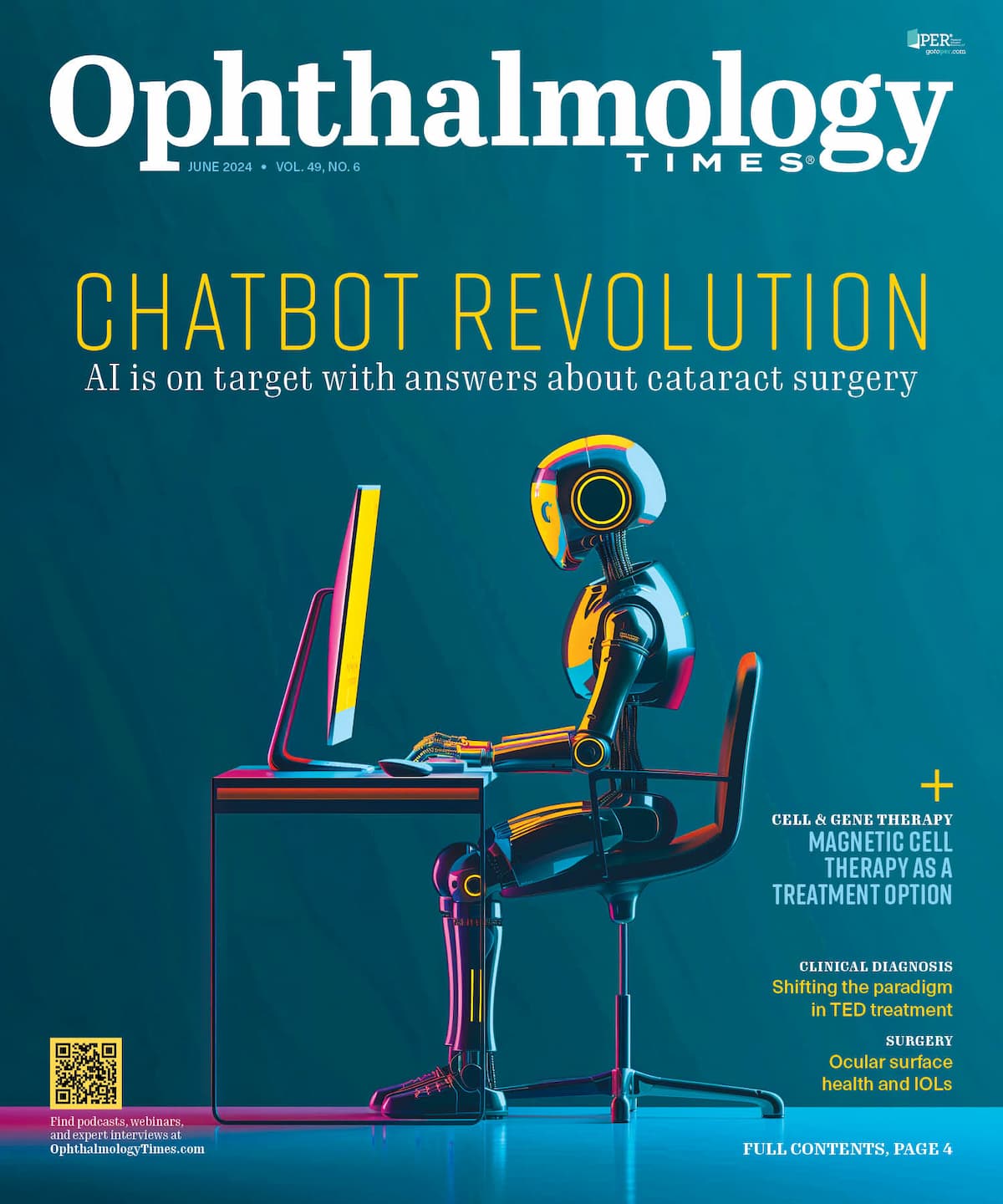Publication
Article
Digital Edition
An overview of real-world geographic atrophy data
Durga Borkar, MD, MMCi, recently discussed the quality data (Qdata, Verana Health) gathered on geographic atrophy as well as the GATHER 1 and GATHER 2 data.
(Image Credit: AdobeStock/gonin)

Geographic atrophy was a key topic during the Retina World Congress 2024 meeting in Fort Lauderdale, Florida.
Durga Borkar, MD, MMCi, a vitreoretinal surgeon at the Duke Eye Center in North Carolna and a medical adviser to Verana Health, recently discussed the quality data (Qdata, Verana Health) gathered on geographic atrophy as well as the GATHER 1 and GATHER 2 data she presented at the annual event. Verana Health partners with the American Academy of Ophthalmology Intelligent Research in Sight (IRIS) Registry, and research projects at Retina World Congress centered on these IRIS Registry data.
Borkar explained that Verana Health is the exclusive data curation and analytics partner of the American Academy of Ophthalmology IRIS Registry, and through this partnership, Verana has access to a real-world data network of more than 80 million deidentified patients from more than 15,000 contributing clinicians. “In utilizing its VeraQ population health data engine, Verana Health ingests and curates the real-world data from electronic health records [EHRs] to generate insights on a variety of ophthalmic conditions,” she explained.
Borkar is part of the medical team at Verana Health and serves as a medical adviser to provide oversight and clinical guidance alongside the team of data scientists. “The data are curated into quality data modules, which Verana Health calls Qdata,” she said. “These modules can help life science companies accelerate research and advance treatments for a variety of conditions, including geographic atrophy, glaucoma, diabetic retinopathy, and more.”
Borkar also offered some details on Verana Health projects featured at the Retina World Congress using these data, including the FARETINA study, which is done in partnership with Genentech. “And this is the largest real-world data study looking at real-world outcomes using faricimab for both neovascular AMD [age-related macular degeneration] and diabetic macular edema,” she said. Additionally, she noted that Verana Health presented a video abstract that discusses the real-world landscape of faricimab use and includes the results from the FARETINA study.
In another video abstract, Verana Health partnered with Bausch + Lomb to examine outcomes after photodynamic therapy (PDT) with verteporfin (Visudyne). “This is done specifically in patients [with] neovascular AMD who may potentially [have disease] refractory to anti-VEGF treatment,” Borkar said. “In this study, we looked at what happens to treatment intervals with anti-VEGF [before] and post PDT with Visudyne. And what we found was that PDT can serve as a great adjuvant therapy and decrease treatment burden for patients with intravitreal injections and neovascular age-related macular degeneration.”
GATHER 1 and GATHER 2 data
During the Retina World Congress event, Borkar also presented a long-term study overview of the GATHER 1 and GATHER 2 studies. These are 2 phase 3 randomized controlled trials looking at the efficacy and safety of avacincaptad pegol (ACP). “In [findings from] these studies, we see that there is a significant reduction and geographic atrophy lesion size growth rate over time when we look at how these lesions grow compared with sham,” she explained. “And in these studies, patients are treated monthly with ACP and they’re compared at both 12 and 24 months in the long-term study overview. What we see is that the treatment effect of slowing GA lesion growth rate amplifies over time and is quite impressive at the 24-month mark.”
Geographic atrophy model
Borkar also provided some details on the Qdata geographic atrophy model. She presented clinical trial results for drug currently on the market and available to patients.
Borkar also said she believes it is an interesting time for geographic atrophy research and treatment. “For the longest time, we haven’t had a treatment for geographic atrophy. So I think it’s changed our discussions with patients. For a long time, we didn’t follow a lot of these patients [with] geographic atrophy in the retina clinic, and IRIS Registry data suggest that.”
Moreover, Borkar noted that many of these patients are seeing comprehensive ophthalmologists and optometrists.
“So [the] big change has been in referring these patients to retina specialists and having these initial conversations about the 2 treatments that are available,” she said. “Additionally, we talk to them about how we’ll monitor them, how we’ll reduce treatment burden for them. These are monthly injections that they have to come in for. So thinking about how we can streamline their imaging visits and their injection visits to make this treatment as easy for them to tolerate as possible has become a main focus, and that was something that we didn’t think about a couple of years ago.”

Newsletter
Don’t miss out—get Ophthalmology Times updates on the latest clinical advancements and expert interviews, straight to your inbox.





